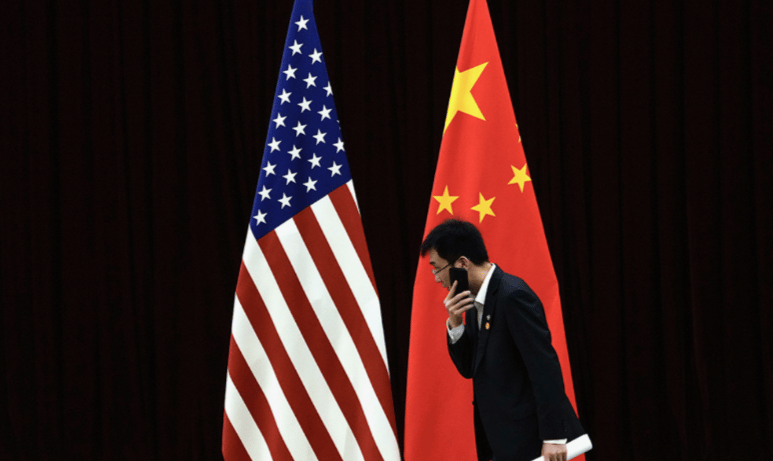China’s Service Sector Slows Amid US Tariff Uncertainty: A Closer Look at the April PMI Data
In April, China’s service sector showed the slowest growth in seven months, with a noticeable decline in the pace of new orders. This slowdown can largely be attributed to the ongoing uncertainty surrounding U.S. tariffs and the broader trade tensions between the two largest economies in the world. According to the Caixin/S&P Global Services Purchasing Managers’ Index (PMI), the service sector’s growth slowed significantly in April, and the impact of U.S. tariffs seems to be weighing on business confidence. This article delves into the PMI data, exploring the implications for China’s economy, particularly in the service industry, and the broader global trade landscape.
Understanding the PMI Decline: The Numbers Tell a Story
The April data highlighted a worrying trend in China’s service sector, with the Caixin/S&P Global Services PMI falling to 50.7 from 51.9 in March. This marked the weakest performance since September and raised concerns about the future trajectory of the sector. A PMI reading above 50 indicates expansion, while a figure below 50 signals contraction. The result in April, though still positive, signals a deceleration of growth. Additionally, official PMI data revealed a slight decrease, with the index dropping to 50.1 from 50.3 in March.
The slowdown in the service sector reflects broader challenges faced by businesses operating in a volatile economic environment. The decline in new orders and the rising uncertainty caused by U.S. tariffs are contributing factors to this slowdown. Let’s break down the primary elements of the PMI data:
Key Insights from the PMI Data:
Caixin/S&P Global Services PMI dropped to 50.7 in April, down from 51.9 in March.
New Orders Slowed: A significant deceleration in new order growth was observed, indicating weaker demand for services.
Export-Oriented Businesses Affected: The Caixin PMI is known to be more reflective of trends in smaller, export-oriented firms, which are directly impacted by international trade tensions.
Official PMI Data showed a slight contraction, declining to 50.1 from 50.3.
These results paint a picture of an economy at a crossroads, with services, which are a major contributor to China's GDP, facing challenges from external factors like tariffs and internal uncertainties.

Factors Contributing to the Slowdown: US Tariffs and Global Uncertainty
The slowdown in China’s service sector comes amid ongoing global trade disruptions, particularly the tension between China and the U.S. The trade war has led to uncertainties that directly affect both consumer sentiment and the operations of service-based businesses. Let’s examine the key contributing factors to the slowdown:
U.S. Tariffs on Chinese Goods The ongoing tariff hikes on Chinese goods exported to the U.S. continue to strain businesses that rely on global supply chains. While the direct impact on the service sector may seem less obvious, the ripple effect is felt through reduced consumer confidence and slowed demand.
Increased Trade Uncertainty As tariffs remain in place, the uncertainty surrounding trade relations between the U.S. and China increases. This uncertainty not only impacts manufacturing but also weakens demand for services, as businesses are reluctant to commit to long-term investments.
Global Economic Pressures Beyond the U.S.-China trade war, the global economic environment remains challenging. Weak demand from key trading partners, coupled with the effects of COVID-19, continues to pose hurdles for businesses across various industries, including services.
Internal Economic Adjustments As China adjusts its economic policies to stimulate domestic demand, the service sector must grapple with the challenges of transitioning from an export-driven to a more consumption-based economy. This shift often involves growing pains as companies realign their business models.
Factors Influencing China’s Service Sector:
External trade disruptions, especially the impact of U.S. tariffs.
Weak domestic demand resulting from broader economic uncertainty.
Pressure from global economic slowdown, with slower growth in major markets.

The Road Ahead: What Does This Mean for China’s Economic Outlook?
With services being a critical component of China's economic growth, the slowdown signals potential challenges ahead for the country’s broader economic health. While the PMI data shows some resilience—since the index remains above 50, indicating expansion—it is clear that growth is slowing. The following are possible scenarios for China’s service sector in the coming months:
Continued Trade Tensions If trade tensions with the U.S. persist or escalate further, it could deepen the challenges faced by the service sector. Reduced exports could limit demand for services tied to international trade, such as logistics, financial services, and consulting.
Government Stimulus Measures The Chinese government may implement further stimulus measures to support the economy. This could include increased investment in infrastructure or targeted support for industries most affected by the trade war. The effectiveness of such measures will be crucial in determining whether the service sector can recover its momentum.
Shift Toward Domestic Consumption As China continues to pivot towards a consumption-driven economy, services linked to domestic demand, such as retail, healthcare, and technology, could see growth. However, this will depend on the ability of Chinese consumers to maintain spending levels amid economic uncertainty.
Conclusion: A Decelerating But Resilient Economy
April’s Caixin/S&P Global Services PMI data offers a snapshot of a service sector under pressure. While the index still suggests growth, the pace of expansion has slowed considerably due to factors such as the U.S. tariffs, ongoing trade uncertainties, and broader global economic challenges. This deceleration in service sector activity is a reminder that even amidst positive economic performance, external factors—especially trade tensions—can significantly disrupt growth.
Looking ahead, China’s service sector may face further challenges, particularly if global economic conditions remain uncertain or deteriorate. However, with the government’s focus on transitioning to a consumption-driven economy and potential policy interventions, there is still hope for stabilization and recovery. For now, the sector remains resilient, but it will need to navigate through these headwinds in the coming months.


















Comments